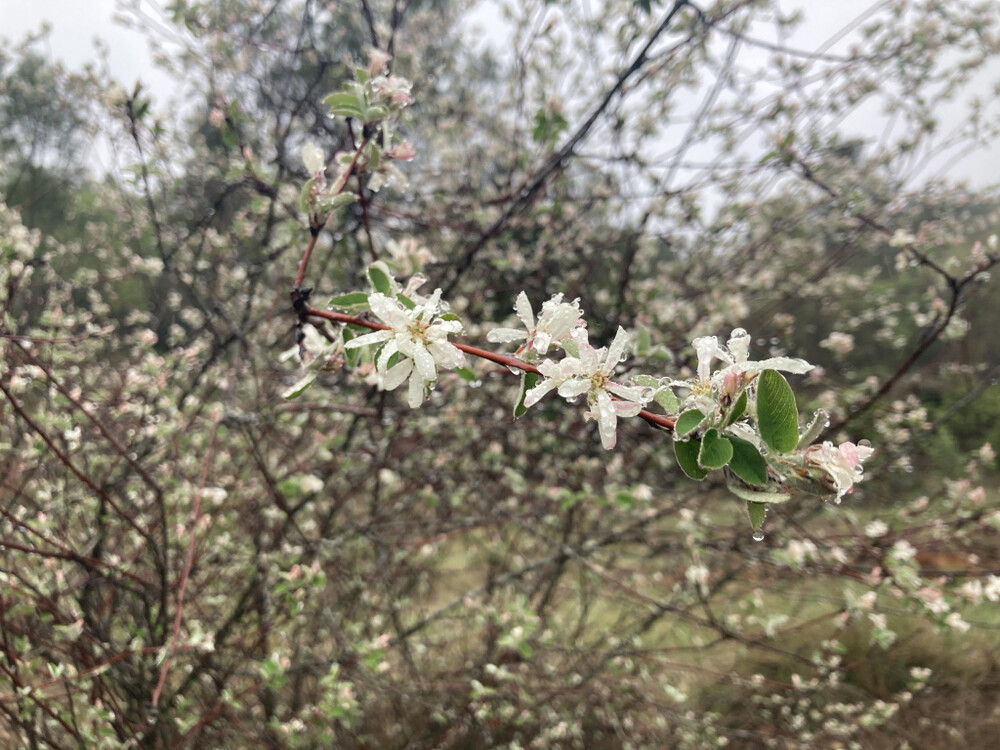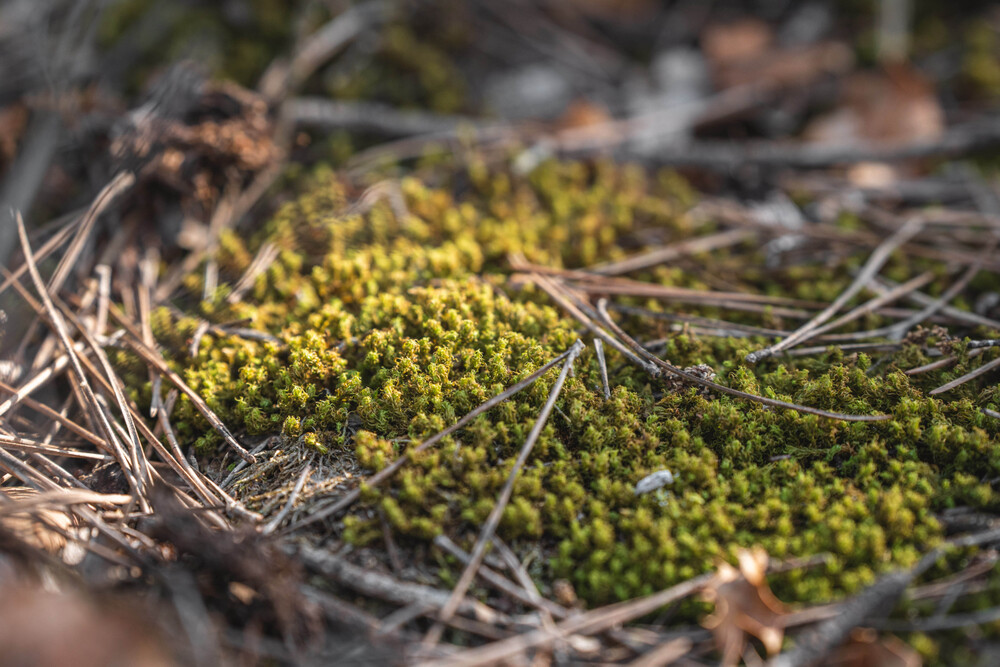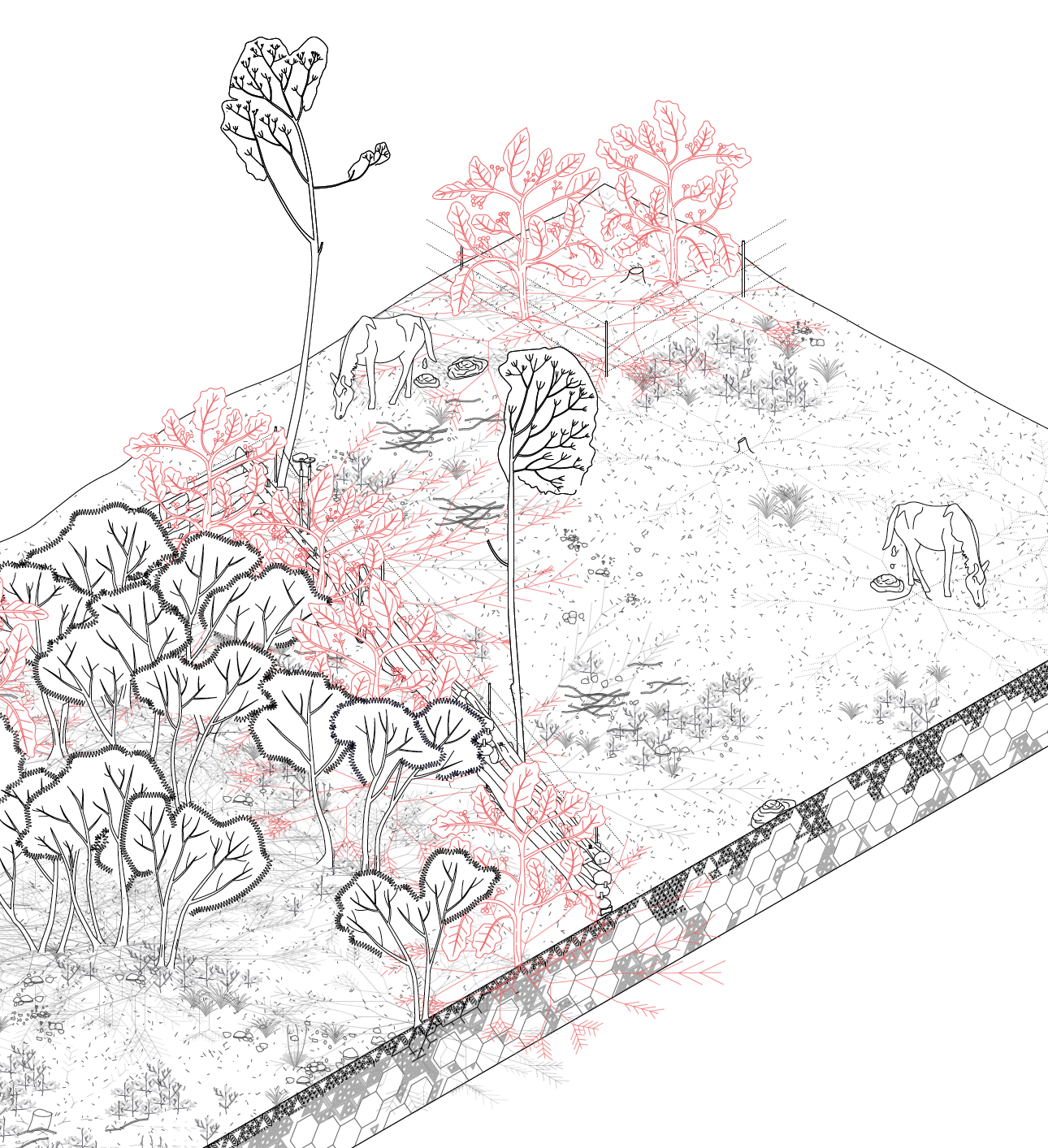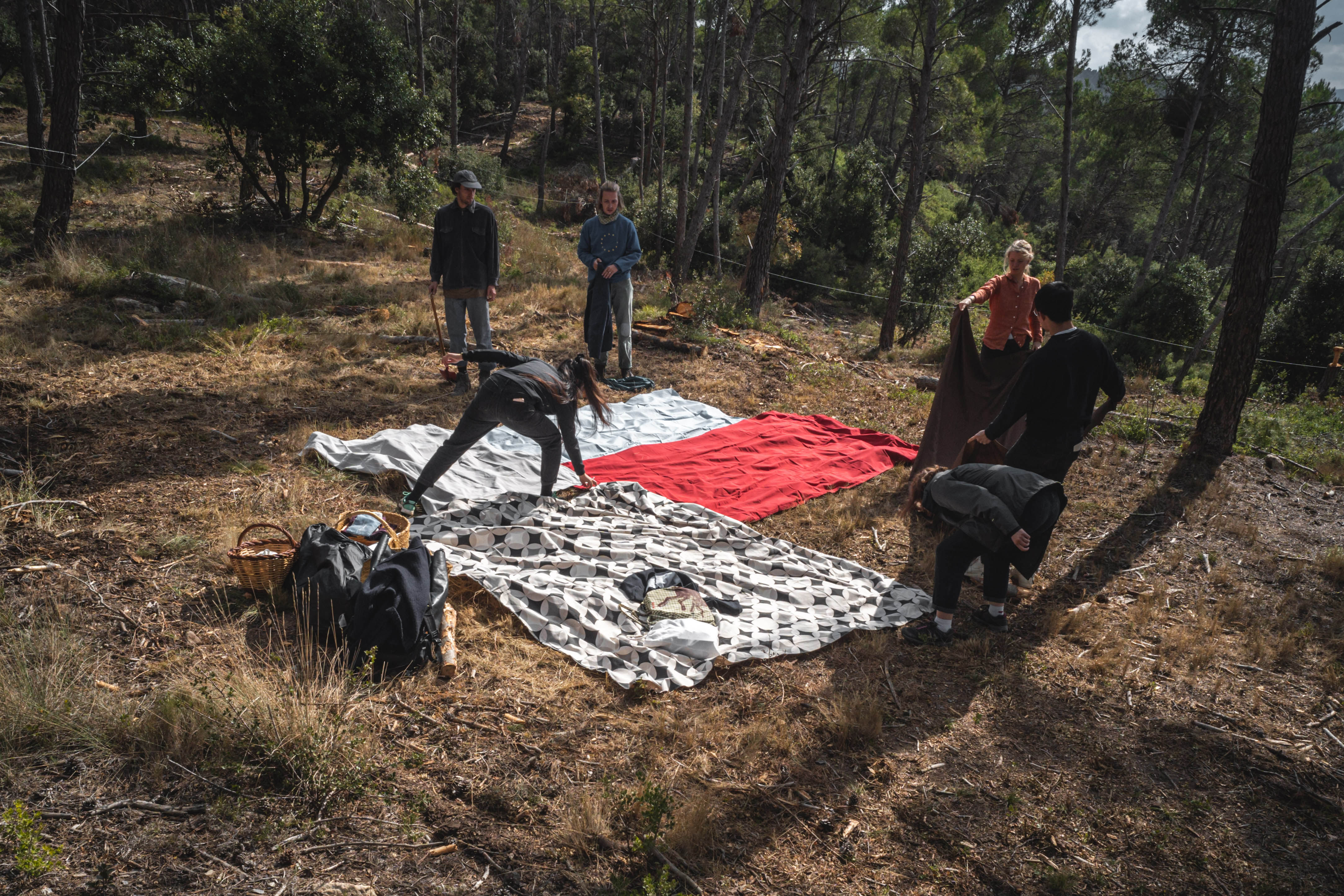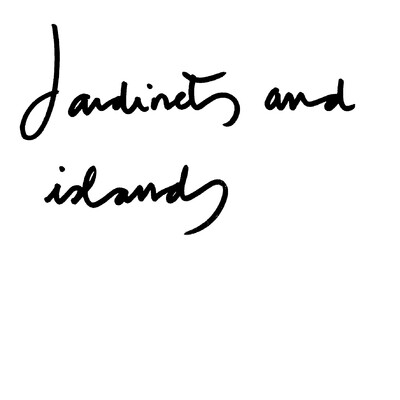
Jardinets and Islands
Each Garden contains several Jardinets and Islands. These are punctual moments of intensive management that take advantage of unique locations on the site. This could be a grove of Holly Oaks (Quercus ilex), a moss-covered area, a rare Mountain Ash (Sorbus spp.). The selection of these small gardens (Jardinets in Catalan) is distinctly personal and emerges from the fieldwork process. The Jardinets and Islands are fenced from the horses, which protects their unique character and allows for the addition of new plants that would otherwise be grazed by the horses. The project will introduce a diversity of drought-tolerant fruiting trees and shrubs to the Jardinets and Islands that will define these areas and provide fruit and berries to visitors. The new plants are located along the edge of the fence so their roots can take advantage of the improved soil created by the grazing strategy while the fruit and leaves are protected from the horses.
The Jardinets create the possibility for a more intimate engagement with the place. Image of moss by Julian Rickenbacher, used under CC 4.0. Other images Chair of Being Alive.
The Jardinets are located along public paths and invite passersby to rest in the shade and eat the fruit. They are marked by the fences built out of the fallen logs and branches left over from previous logging operations. Often, landowners are left with a forested plot of land that cannot be farmed, so they try to make a small profit by selective logging. Unfortunately, the work is often done poorly and the forests are damaged. We are working with local forest engineers to improve the health and diversity of the forests over the course of the project. When the team took over the management of the land, we had to dispose of large piles of wood left by the loggers. Instead of removing the wood, two local craftsmen sorted the material by size and created a series of beautifully intricate fences that mark the locations of the Jardinets.
When the team took over the management of the sites, several of them had piles of wood left over from recent logging operations. The wood was reworked into wood fences that mark the Jardinets. Photos Chair of Being Alive
The Islands are similar to the Jardinets except that they are located in the interior of the parcels off of the public paths. The Islands also mark unique locations and are planted with fruit trees protected from the horses yet benefiting from the improved soil. They occur at the intersection between two parcels and diversify the structure of the landscape.
